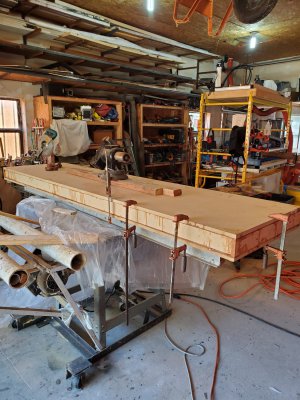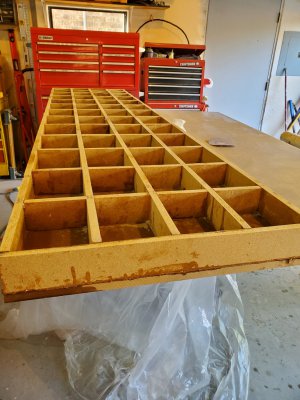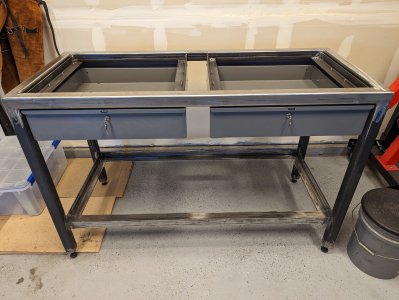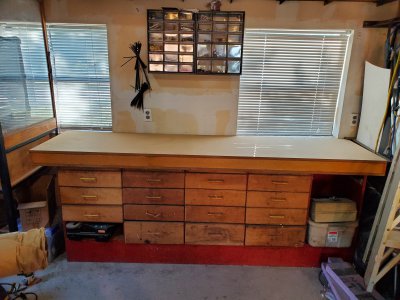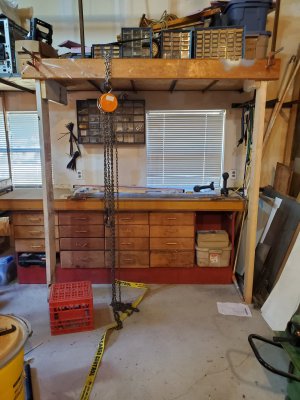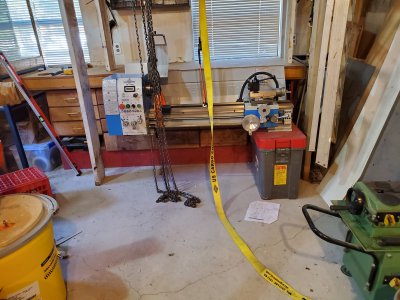I got a shipping notice, but my bathroom scale won't be suitable for any answers. Doesn't matter much for handling.
I also bought a sheet of MDF yesterday and will be gluing up a torsion box for a new table top. Should keep the lathe flat. Here's a pic with the long pieces of the grid roughly in place. But it will make the bench top about 35" off the floor. Hopefully that will be a comfortable working height.
I also bought a sheet of MDF yesterday and will be gluing up a torsion box for a new table top. Should keep the lathe flat. Here's a pic with the long pieces of the grid roughly in place. But it will make the bench top about 35" off the floor. Hopefully that will be a comfortable working height.



